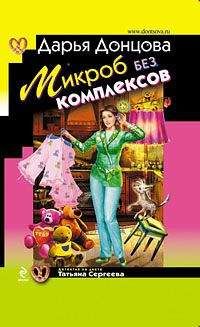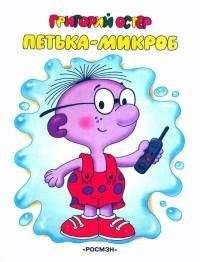Микроб редко приходит один. Как микроорганизмы влияют на нашу жизнь - Эгерт Маркус
С точки зрения гигиены жизнь на орбитальной станции или полет в космическом корабле представляют значительные трудности…
• Системы жизнеобеспечения постоянно перерабатывают те же воздух и воду.
• Невесомость и космическое излучение приводят к серьезным физическим изменениям (например, потере мышечной массы), а также к ослаблению иммунной системы.
• Гигиенические процедуры (мытье, душ) возможны в ограниченных количествах.
• Изменения в рационе питания влияют на микробиом космонавтов.
• Психический стресс (теснота, скука) — дополнительная нагрузка на иммунную систему.
• В невесомости микробы и загрязнения распределяются иначе, чем на Земле.
Масштабное исследование микробиома на международной космической станции (МКС) показало, что заселение микробами там практические такое же, как и на Земле. Большое разнообразие микробов (тысячи видов) ученые истолковали как признак «естественного» микробиома среды. Меньший микробиом указывал бы на окружающие условия, способствующие инфекционным заболеваниям.
Поскольку МКС герметична, известно, какими путями микробы попадают на борт: с космонавтами и предметами. Согласно «Планетарной защите», все приборы, выбрасываемые в космос, должны быть стерильны. Они разбираются и стерилизуются в чистых помещениях — достаточно трудоемкая работа.
Чистые помещения регулярно проверяются на заражение микробами. Пару микробов или их молекулярные следы в форме ДНК или РНК находят всегда.
Ученые из Регенсбурга в 2008 году обнаружили особую группу археев, так называемых Thaumarchaeota. Они могли попасть на станцию только с кожных покровов человека.
Проблема в том, что до того не было известно, что археи могут обитать на человеческой коже. Более тщательные исследования показали, что до 10 % прокариотической микрофлоры кожи человека может состоять из этих архей. Их функции или значение для здоровья пока совершенно неизвестны. Без космических исследований мы, вероятно, еще долго не обнаружили бы эту группу кожных микроорганизмов.
Думаю, космические исследования подарят нам еще немало интереснейших знаний, которые можно будет применить в домашней гигиене, к которой здесь, на Земле, относятся с усмешкой. В космосе человек находится один на один со своими спутниками-микробами в тесном пространстве и ему некуда бежать. Именно космос поможет окончательно прояснить, какие меры лучше остальных годятся для того, чтобы отношения человека и микроба стали межпланетной историей успеха.
Эпилог

Летом 2017 года работа перестала приносить мне радость. Наше исследование кухонных губок вызывало большой резонанс, чего мы никак не ожидали. Немецкие и даже иностранные СМИ набросились на эту тему. Редкий день обходился без просьбы дать интервью. Собственно, мечта для ученого, который хочет, чтобы его труд восприняли серьезно.
Но освещение проблемы приобрело абсурдные черты. Можно подумать, что прямоугольный пористый хозтовар для кухни не менее опасен, чем радиоактивный материал. Я пытался противостоять нарастающей истерии, предлагая во всех интервью просто менять губки почаще. Очевидно, я сильно недооценил нелюбовь хозяев губок отправлять их на заслуженную пенсию…
Проводя исследования, я не преследовал цели запугать кого-либо. Микрофлора кухонной губки всего лишь идеально подходит для того, чтобы лучше понять мир микробов. Прежде всего, мы должны примириться с основным законом жизни: без микробов нам никуда — они наши постоянные и ближайшие спутники. Но это совсем неплохо, за парой исключений, о которых нам стоит помнить.
1. Микробы заслуживают уважения и восхищения. Это древние крошечные микроорганизмы, идеально приспособленные к окружающей среде, неутомимые труженики, первые и, скорее всего, последние обитатели нашей планеты.
2. Микробы нужны человеку для жизни, а не наоборот. Без микробиома, состоящего из 10 триллионов клеток, человек не может быть здоров.
3. Не микробы живут у нас, а мы у них. Только благодаря деятельности микробов Земля стала пригодной для людей.
4. Стерильность дома — это иллюзия, к ней не нужно стремиться. Миллиарды лет микробы осваивали планету, выживая в экстремальных условиях, и наши квартиры для них не исключение. И это хорошо, так как они обогащают наш микробиом.
5. Дети больше остальных нуждаются в богатом микробном окружении как в спарринг-партнере для их иммунной системы. Микробы стимулируют детскую иммунную систему (например, если есть домашние животные) и предупреждают возникновение астмы и различных видов аллергии в дальнейшем.
6. От инфекционных заболеваний нужно защищаться, в целом от микробов — нет. Инфекционные болезни могут быть опасны для жизни, но они вызываются незначительным количеством микроорганизмов.
7. Проверенных домашних средств и вакцинации достаточно, чтобы полностью защититься дома от инфекционных заболеваний. Тщательная уборка, кислота, мыло и сушка — эффективные меры против микроорганизмов дома. От по-настоящему опасных болезней защищают прививки.
8. Дополнительные антибактериальные средства нужны, только если кто-то из членов семьи находится в острой фазе заболевания или хронически болен. Антибиотики (принимаемые правильно) и дезинфицирующие средства — спасение для больных и ухаживающих за ними, но не для здоровых людей.
9. К пробиотическим мерам сейчас все больше внимания. «Полезные» бактерии скоро будут не только в йогуртах, но и в средствах для уборки.
Как микробиолог, я лелею надежду, что в будущем гигиена приобретет совершенно новое значение — что она станет наукой и учением об активном управлении микробами, а не просто средством уничтожения микробов для предотвращения заболеваний. Я буду очень рад, если моя книга на шаг приблизит нас к такому будущему.
Список литературы
Carabotti М, Scirocco A, Maselli МА & Severi С (2015) The gutbrain axis: interactions between enteric microbiota, central and enteric nervous systems. Annals of Gastroenterology 28: 203–209.
Clemente JC, Pehrsson EC & Blaser MJ et al. (2015) The microbiome of uncontacted Amerindians. Science Advances 1: e1500183.
Dodd MS, Papineau D, Grenne T, Slack JF, Rittner M, Pirajno F, O’Neil J & Little CTS (2017) Evidence for early life in Earth’s oldest hydrothermal vent precipitates. Nature 543: 60–64.
Dominguez-Bello MG, Jesus-Laboy KM de & Shen N et al. (2016) Partial restoration of the microbiota of cesarean-bom infants via vaginal microbial transfer. Nature Medicine 22: 250–253.
Fernández L, Langa S, Martín V, Maldonado A, Jiménez E, Martín R & Rodríguez JM (2013) The human milk microbiota: Origin and potential roles in health and disease. Pharmacological Research 69:1–10.
Flemming H-C, Wingender J, Szewzyk U, Steinberg P, Rice SA & Kjelleberg S (2016) Biofilms: an emergent form of bacterial life. Nature Reviews Microbiology 14: 563–575.
Hennet T & Borsig L (2016) Breastfed at Tiffany’s. Trends in Biochemical Sciences 41:508–518.
Kelly CR, Kahn S, Kashyap P, Laine L, Rubin D, Atreja A, Moore T & Wu G (2015) Update on fecal microbiota transplantation 2015: Indications, methodologies, mechanisms, and outlook. Gastroenterology 149: 223–237.
Kinross JM, Darzi AW & Nicholson JK (2011) Gut microbiomehost interactions in health and disease. Genome Medicine 3: 14.
Kort R, Caspers M, van de Graaf A, van Egmond W, Keijser B & Roeselers G (2014) Shaping the oral microbiota through intimate kissing. Microbiome 2: 41.
Leclercq S, Mian FM, Stanisz AM, Bindels LB, Cambier E, Ben-Amram H, Koren O, Forsythe P & Bienenstock J (2017) Lowdose penicillin in early life induces long-term changes in murine gut microbiota, brain cytokines and behavior. Nature Communications 8:15062.
Liu CM, Hungate BA & Tobian AAR et al. (2013) Male circumcision significantly reduces prevalence and load of genital anaerobic bacteria. mBio 4: e00076.
Liu CM, Prodger JL & Tobian AAR et al. (2017) Penile anaerobic dysbiosis as a risk factor for HIV infection. mBio 8: e00996-17.
Lloyd-Price J, Abu-Ali G & Huttenhower C (2016) The healthy human microbiome. Genome Medicine 8: 1024.
McFall-Ngai M (2008) Host-microbe symbiosis: The Squid-Vibrio association — A naturally occurring, experimental model of animal/bacterial partnerships. Advances in Experimental Medicine and Biology 635: 102–12.
Prescott SL (2017) History of medicine: Origin of the term microbiome and why it matters. Human Microbiome Journal 4: 24–25.
Ross AA, Doxey AC & Neufeld JD (2017) The skin microbiome of cohabiting couples. mSystems 2: e00043–17.
Sender R, Fuchs S & Milo R (2016) Are we really vastly outnumbered? Revisiting the ratio of bacterial to host cells in humans. Cell 164: 337–340.
Sevelsted A, Stokholm J, Bønnelykke К & Bisgaard H (2015) Cesarean section and chronic immune disorders. Pediatrics 135: e92–e98.
Thomas CM & Nielsen KM (2005) Mechanisms of, and barriers to, horizontal gene transfer between bacteria. Nature Reviews Microbiology 3: 711–21.
Verma S & Miyashiro T (2013) Quorum sensing in the Squid-Vibrio symbiosis. International Journal of Molecular Sciences 14:16386–16401.
Vodstrcil LA, Twin I & Garland SM et al. (2017) The influence of sexual activity on the vaginal microbiota and Gardnerella vaginalis clade diversity in young women. PLOS ONE 12: e0171856.
Vreeland RH, Rosenzweig WD & Powers DW (2000) Isolation of a 250 million-year-old halotolerant bacterium from a primary salt crystal. Nature 407: 897–900.
Whiteley M, Diggle SP & Greenberg EP (2017) Progress in and promise of bacterial quorum sensing research. Nature 551: 313–320.
Barker J & Bloomfield SF (2000) Survival of Salmonella in bathrooms and toilets in domestic homes following salmonellosis. Journal of Applied Microbiology 89: 137–144.
Bloomfield SF, Rook GAW, Scott EA, Shanahan F, Stanwell-Smith R & Turner P (2016) Time to abandon the hygiene hypothesis: new perspectives on allergic disease, the human microbiome, infectious disease prevention and the role of targeted hygiene. Perspectives in Public Health 136: 213–224.
Butt U, Saleem U, Yousuf K, El-Bouni T, Chambler A & Eid AS (2012) Infection risk from surgeons’ eyeglasses. Journal of Orthopaedic Surgery 20: 75–77.
Cardinale M, Kaiser D, Lueders T, Schnell S & Egert M (2017) Microbiome analysis and confocal microscopy of used kitchen sponges reveal massive colonization by Acinetobacter, Moraxella and Chryseobacterium species. Scientific Reports 7: 5791.
Caselli E (2017) Hygiene: microbial strategies to reduce pathogens and drug resistance in clinical settings. Microbial Biotechnology 10: 1079–1083.
Caudri D, Wijga A, Scholtens S, Kerkhof M, Gerritsen J, Ruskamp JM, Brunekreef B, Smit HA & Jongste JC de (2009) Early daycare is associated with an increase in airway symptoms in early childhood but is no protection against asthma or atopy at 8 years. American Journal of Respiratory and Critical Care Medicine 180:491–498.
Di Lodovico S, Del Vecchio A, Cataldi V, Di Campli E, Di Bartolomeo S, Cellini L & Di Giulio M (2018) Microbial contamination of smartphone touchscreens of Italian university students. Current Microbiology 75: 336–342.
Dunn RR, Fierer N, Henley JB, Leff JW & Menninger HL (2013) Home life: Factors structuring the bacterial diversity found within and between homes. PLOS ONE 8: e64133.
Egert М, Schmidt I, Bussey К & Breves R (2010) A glimpse under the rim — the composition of microbial biofilm communities in domestic toilets. Journal of Applied Microbiology 108: 1167–1174.
Egert M, Späth K, Weik K, Kunzelmann H, Horn C, Kohl M & Blessing F (2015) Bacteria on smartphone touchscreens in a German university setting and evaluation of two popular cleaning methods using commercially available cleaning products. Folia Microbiologica 60: 159–164.
Gibbons SM, Schwartz T, Fouquier J, Mitchell M, Sangwan N, Gilbert JA & Kelley ST (2015) Ecological succession and viability of human-associated microbiota on restroom surfaces. Applied and Environmental Microbiology 81: 765–773.
Gilbert JA (2017) How do we make indoor environments and healthcare settings healthier? Microbial Biotechnology 10:11–13.
Hesselmar B, Hicke-Roberts A & Wennergren G (2015) Allergy in children in hand versus machine dishwashing. Pediatrics 135: e590–7.
Johnson DL, Mead KR, Lynch RA & Hirst DVL (2013) Lifting the lid on toilet plume aerosol: A literature review with suggestions for future re-search. American Journal of Infection Control 41: 254–258.
Kotay S, Chai W, Guilford W, Barry K & Mathers AJ (2017) Spread from the sink to the patient: In situ study using green fluorescent protein (GFP)-expressing Escherichia coli to model bacterial dispersion from hand-washing sink-trap reservoirs. Applied and Environmental Microbiology 83: e03327–16.
Lang JM, Eisen JA & Zivkovic AM (2014) The microbes we eat: abundance and taxonomy of microbes consumed in a day’s worth of meals for three diet types. PeerJ 2: e659.
Martin LJ, Adams RI & Bateman A et al. (2015) Evolution of the indoor biome. Trends in Ecology & Evolution 30:223–232.
Meadow JF, Altrichter AE & Green JL (2014) Mobile phones carry the personal microbiome of their owners. PeerJ 2:e447.
Miranda RC & Schaffner DW (2016) Longer contact times increase cross-contamination of Enterobacter aerogenes from surfaces to food. Applied and Environmental Microbiology 82: 6490–6496.
Raghupathi PK, Zupančič J, Brejnrod AD, Jacquiod S, Houf K, Burmølle M, Gunde-Cimerman N & Sørensen SJ (2018) Microbial diversity and putative opportunistic pathogens in dishwasher biofilm communities. Applied and Environmental Microbiology 84: e02755-17.
Rook GA (2013) Regulation of the immune system by biodiversity from the natural environment: An ecosystem service essential to health. Proceedings of the National Academy of Sciences USA 110:18360-18367.
Rusin P, Orosz-Coughlin P & Gerba С (1998) Reduction of faecal coliform, coliform and heterotrophic plate count bacteria in the household kitchen and bathroom by disinfection with hypochlorite cleaners. Journal of Applied Microbiology 85:819–828.
Savage AM, Hills J, Driscoll K, Fergus DJ, Grunden AM & Dunn RR (2016) Microbial diversity of extreme habitats in human homes. PeerJ 4: e2376.
Strachan DP (1989) Hay fever, hygiene, and household size. BMJ 299:1259–1260.
Xu J & Gordon JI (2003) Honor thy symbionts. Proceedings of the National Academy of Sciences USA 100: 10452-10459.
Zupančič J, Novak Babič M, Zalar P & Gunde-Cimerman N (2016) The black yeast Exophiala dermatitidis and other selected opportunistic human fungal pathogens spread from dishwashers to kitchens. PLOS ONE 11: e0148166.
Barberis I, Bragazzi NL, Galluzzo L & Martini M (2017) The history of tuberculosis: from the first historical records to the isolation of Koch’s bacillus. Journal of Preventive Medicine and Hygiene 58: E9-E12.
Baum M & Liesen H (1997) Sport und Immunsystem. Der Orthopäde 26:976–980.
Bhullar K, Waglechner N, Pawlowski A, Koteva K, Banks ED, Johnston MD, Barton HA & Wright GD (2012) Antibiotic resistance is prevalent in an isolated cave microbiome. PLOS ONE 7: e34953.
Brockmann D & Helbing D (2013) The hidden geometry of complex, network-driven contagion phenomena. Science 342: 1337–1342.
Brolinson PG & Elliott D (2007) Exercise and the immune system. Clinics in Sports Medicine 26: 311–319.
Falush D, Wirth T & Linz В et al. (2003) Traces of human migrations in Helicobacter pylori populations. Science 299: 1582–1585.
Fatkenheuer G, Hirschel В & Harbarth S (2015) Screening and isolation to control meticillin-resistant Staphylococcus aureus: sense, nonsense, and evidence. The Lancet 385: 1146–1149.
Furuse Y, Suzuki A & Oshitani H (2010) Origin of measles virus: divergence from rinderpest virus between the 11th and 12th centuries. Virology Journal 7: 52.
Greaves I & Porter KM (1992) Holy spirit? An unusual cause of pseudomonal infection in a multiply injured patient. BMJ 305:1578.
Gupta S (2017) Microbiome: Puppy power. Nature 543: S48-S49.
Hertzberg VS, Weiss H, Elon L, Si W & Norris SL (2018) Behaviors, movements, and transmission of droplet-mediated respiratory diseases during transcontinental airline flights. Proceedings of the National Academy of Sciences USA 115: 3623–3627.
Kirschner АКТ, Atteneder M, Schmidhuber A, Knetsch S, Famleitner AH & Sommer R (2012) Holy springs and holy water: underestimated sources of illness? Journal of Water and Health 10: 349-57.
Kanig C, Tauchnitz S, Kunzelmann H, Horn C, Blessing F, Kohl M & Egert M (2017) Quantification and identification of aerobic bacteria in holy water samples from a German environment. Journal of Water and Health 15:823–828.
Kuntz P, Pieringer-Müller E & Hof H (1996). Infektionsgefährdung durch Bißver-letzungen. Deutsches Ärzteblatt 93: A-969-72.
Maixner F, Krause-Kyora В & Turaev D et al. (2016) The 5300-year-old Helicobacter pylori genome of the Iceman. Science 351:162–165.
Markley JD, Edmond MB, Major Y, Bearman G & Stevens MP (2012) Are gym surfaces reservoirs for Staphylococcus aureus? A point prevalence survey. American Journal of Infection Control 40: 1008–1009.
Me Cay PH, Ocampo-Sosa AA & Fleming GTA (2010) Effect of subinhibitory concentrations of benzalkonium chloride on the competitiveness of Pseudomonas aeruginosa grown in continuous culture. Microbiology 156: 30–38.
Meadow JF, Bateman AC, Herkert KM, O’Connor TK & Green JL (2013) Significant changes in the skin microbiome mediated by the sport of roller derby. PeerJ 1: eS3.
Neu L, Bänziger C, Proctor CR, Zhang Y, Liu W-T & Hammes F (2018) Ugly ducklings — the dark side of plastic materials in contact with potable water. NPJ Biofilms and Microbiomes 4: 7.
Panchin AY, Tuzhikov AI & Panchin YV (2014) Midichlorians — the biomeme hypothesis: is there a microbial component to religious rituals? Biology Direct 9:14.
Pellerin J & Edmond MB (2013) Infections associated with religious rituals. International Journal of Infectious Diseases 17: e945-e948.
Rees JC & Allen KD (1996) Holy water — a risk factor for hospitalacquired infection. Journal of Hospital Infection 32: 51–55.
Sharp PM & Hahn BH (2011) Origins of HIV and the AIDS pandemic. Cold Spring Harbor Perspectives in Medicine 1: a006841.
Stein MM, Hrusch CL & Gozdz J et al. (2016) Innate immunity and asthma risk in Amish and Hutterite farm children. New England Journal of Medicine 375: 411–421.
Webber МА, Buckner MMC, Redgrave LS, Ifill G, Mitchenall LA, Webb C, Iddles R, Maxwell A & Piddock LJV (2017) Ouinolone-resistant gyrase mutants demonstrate decreased susceptibility to triclosan. Journal of Anti-microbial Chemotherapy 72: 2755–2763.
Weber A & Schwarzkopf A (2003). Heimtierhaltung — Chancen und Risiken für die Gesundheit. Gesundheitsberichterstattung des Bundes, Heft 19. Robert Koch-Institut in Zusammenarbeit mit dem Statistischen Bundesamt (Hrsg.), Berlin.
Weber DJ, Rutala WA & Sickbert-Bennett EE (2007) Outbreaks associated with contaminated antiseptics and disinfectants. Antimicrobial Agents and Chemotherapy 51:4217–4224.
Wood M, Gibbons SM, Lax S, Eshoo-Anton TW, Owens SM, Kennedy S, Gilbert JA & Hampton-Marcell JT (2015) Athletic equipment microbiota are shaped by interactions with human skin. Microbiome 3: 25.
Bockmühl DP (2017) Laundry hygiene-how to get more than clean. Journal of Applied Microbiology 122: 1124–1133.
Burton M, Cobb E, Donachie P, Judah G, Curtis V & Schmidt W-P (2011) The effect of handwashing with water or soap on bacterial contamination of hands. International Journal of Environmental Research and Public Health 8:97-104.
Callewaert C, Lambert J & van de Wiele T (2017) Towards a bacterial treatment for armpit malodour. Experimental Dermatology 26: 388–391.
Callewaert C, Maeseneire E de, Kerckhof F-M, Verliefde A, van de Wiele T & Boon N (2014) Microbial odor profile of polyester and cotton clothes after a fitness session. Applied and Environmental Microbiology 80: 6611–6619.
Callewaert C, van Nevel S, Kerckhof F-M, Granitsiotis MS & Boon N (2015) Bacterial exchange in household washing machines. Frontiers in Microbiology 6: 1381.
Cano RJ & Borucki MK (1995) Revival and identification of bacterial spores in 25-to 40-million-year-old Dominican amber. Science 268: 1060-1064.
Dréno В, Pécastaings S, Corvee S, Veraldi S, Khammari A & Roques С (2018) Cutibacterium acnes (Propionibacterium acnes) and acne vulgaris: a brief look at the latest updates. Journal of the European Academy of Dermatology and Venereology 32: 5-14.
Egert M & Simmering R (2016) The microbiota of the human skin. Advances in Experimental Medicine and Biology 902: 61–81.
Fierer N, Hamady M, Lauber CL & Knight R (2008) The influence of sex, handedness, and washing on the diversity of hand surface bacteria. Proceedings of the National Academy of Sciences USA 105:17994-17999.
Fredrich E, Barzantny H, Brune I & Tauch A (2013) Daily battle against body odor: towards the activity of the axillary microbiota. Trends in Microbiology 21: 305–312.
Jonsson KI, Rabbow E, Schill RO, Harms-Ringdahl M & Rettberg P (2008) Tardigrades survive exposure to space in low Earth orbit. Current Biology 18: R729-R731.
Kubota H, Mitani A, Niwano Y, Takeuchi K, Tanaka A, Yamaguchi N, Kawamura Y & Hitomi J (2012) Moraxella species are primarily responsible for generating malodor in laundry. Applied and Environmental Micro-biology 78: 3317–3324.
Lang JM, Coil DA, Neches RY, Brown WE, Cavalier D, Severance M, Hampton-Marcell JT, Gilbert JA & Eisen JA (2017) A microbial survey of the International Space Station (ISS). PeerJ 5: e4029.
Martin A, Saathoff M, Kuhn F, Max H, Terstegen L & Natsch A (2010) A functional ABCC11 allele is essential in the biochemical formation of human axillary odor. Journal of Investigative Dermatology 130: 529–540.
Natsch A (2015) What makes us smell: The biochemistry of body odour and the design of new deodorant ingredients. CHIMIA International Journal for Chemistry 69: 414–420.
Natsch A, Gfeller H, Gygax P & Schmid J (2005) Isolation of a bacterial enzyme releasing axillary malodor and its use as a screening target for novel deodorant formulations. International Journal of Cosmetic Science 27:115–122.
Peterson SN, Snesrud E, Liu J, Ong AC, Kilian M, Schork NJ & Bretz W (2013) The dental plaque microbiome in health and disease. PLOS ONE 8: e58487.
Probst AJ, Auerbach AK & Moissl-Eichinger С (2013) Archaea on human skin. PLOS ONE 8: e65388.
Raynaud X & Nunan N (2014) Spatial Ecology of bacteria at the microscale in soil. PLOS ONE 9: e87217.
Stapleton K, Hill K, Day K, Perry JD & Dean JR (2013) The potential impact of washing machines on laundry malodour generation. Letters in Applied Microbiology 56: 299–306.
Turroni S, Rampelli S & Biagi E et al. (2017) Temporal dynamics of the gut microbiota in people sharing a confined environment, a 520-day ground-based space simulation, MARS500. Microbiome 5: 39.
Wilson JW, Ott CM & Bentrup KH et al. (2007) Space flight alters bacterial gene expression and virulence and reveals a role for global regulator Hfq. Proceedings of the National Academy of Sciences USA 104:16299-16304.




